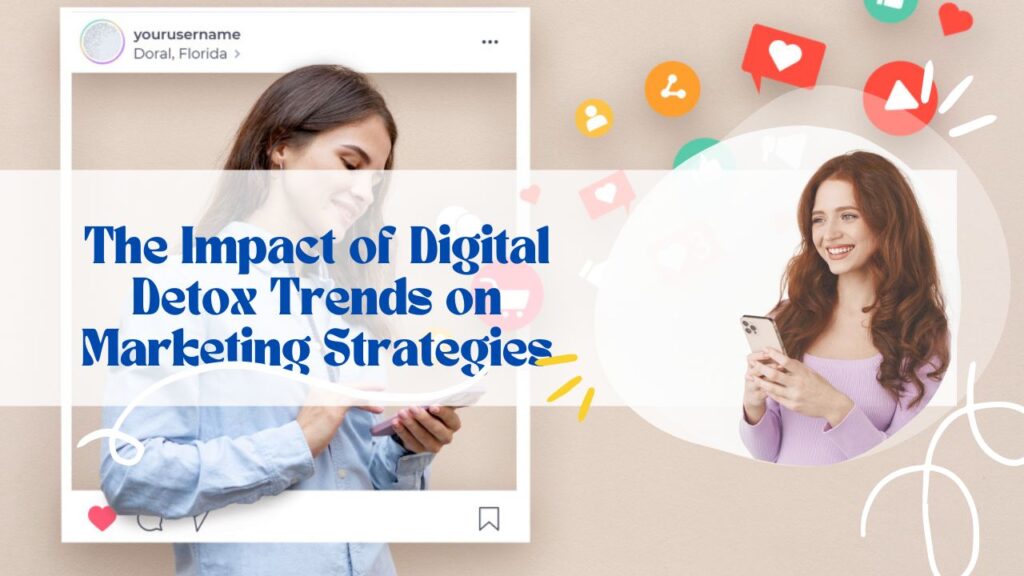In today’s hyperconnected world, the pervasive influence of digital technology on daily life has led many to pursue “digital detoxes” where they limit or eliminate their use of digital devices in order to reduce stress and increase quality of life. This behavioral trend presents unique challenges and opportunities for marketers, who have traditionally relied heavily on digital channels to reach their audiences. This paper explores the impact of digital detox trends on marketing strategies, discussing how marketers can adapt to and respect these shifts in consumer behavior while still engaging effectively with their target audiences.
The Rise of Digital Detox
The concept of a digital detox involves taking a break from digital devices, such as smartphones, tablets, and computers, to alleviate stress and improve personal well-being. The trend has gained momentum as consumers become increasingly aware of the negative aspects of continuous digital engagement, including decreased attention spans, disrupted sleep patterns, and the potential for addiction.
Psychological and Social Drivers
The digital detox trend is largely driven by the desire to reclaim real-life interactions and experiences that are perceived to be diminished by constant digital interruptions. Psychological factors, such as the need to reduce anxiety and depression associated with social media use, also play a significant role. Additionally, there is a growing awareness about the impact of screen time on physical health, including eye strain and poor posture.
Impact on Marketing Strategies
The growing popularity of digital detoxes poses a significant challenge for marketers, who have increasingly relied on digital channels to reach consumers. As segments of the population become harder to reach through digital means, marketers must rethink their strategies.
Challenges
- Reduced Reach and Engagement: As more people engage in digital detoxes, traditional digital marketing campaigns may see lower engagement rates and a reduced reach.
- Ad Blocking and Tech Avoidance: The use of technology to block ads or avoid digital content altogether can undermine the effectiveness of online advertising.
- Shift in Consumer Preferences: A growing distrust of digital ads and concerns over privacy and data security can further alienate potential customers.
Opportunities
- Enhanced Value of Offline Touchpoints: There is an opportunity to innovate in offline marketing strategies, such as through events, direct mail, or in-store experiences, that can engage detoxers.
- Quality Over Quantity: Marketers can focus on creating more meaningful and high-quality content that resonates deeply with the target audience, thereby cutting through the digital noise.
- Ethical Marketing Practices: Emphasizing privacy, data protection, and ethical marketing can help win trust among consumers concerned about the implications of digital overreach.
Adapting Marketing Strategies for the Digital Detox Trend
To adapt to the digital detox trend, marketers need to consider a variety of tactics that can both respect the desire of some consumers to disconnect, while also ensuring continued engagement with their brand.
Diversifying Channels
Instead of relying solely on digital channels, marketers should diversify their outreach efforts to include more traditional media such as print, television, and radio, as well as other creative offline channels. For instance, hosting pop-up events or interactive experiences can attract those taking a break from digital screens.
Creating Meaningful Content
Content that provides real value—be it educational, entertaining, or inspiring—can transcend the barriers of a digital detox. High-quality content that can be consumed quickly or saved for later viewing is particularly appealing to those trying to reduce their screen time.
Leveraging Influencers
Influencers who promote wellbeing and mindful use of technology can be particularly effective partners in reaching audiences interested in digital detoxes. These influencers can bridge the gap between online and offline worlds, creating content that encourages healthy digital habits.
Personalization and Privacy
In an era where privacy concerns are paramount, especially among digital detoxers, marketers must ensure that personalization efforts are balanced with stringent data protection measures. Transparent communication about how consumer data is used can help build trust.
Timing and Scheduling
Understanding when and how often to engage consumers who prefer less screen time is crucial. Marketers should consider optimal timing for sending emails or posting on social media to coincide with periods when these consumers are more likely to be online.
Conclusion
The trend of digital detoxing requires marketers to rethink their digital-first strategies and consider more holistic approaches to consumer engagement. By recognizing the value of offline interactions, creating meaningful content, and respecting consumer privacy, marketers can effectively adapt to changing consumer behaviors. In doing so, they not only continue to reach their target audiences but also build deeper, more meaningful relationships with them.
As the digital landscape continues to evolve, so too must marketing strategies. Embracing flexibility and innovation in response to trends like digital detoxes will be key to success in the increasingly competitive business environment.

